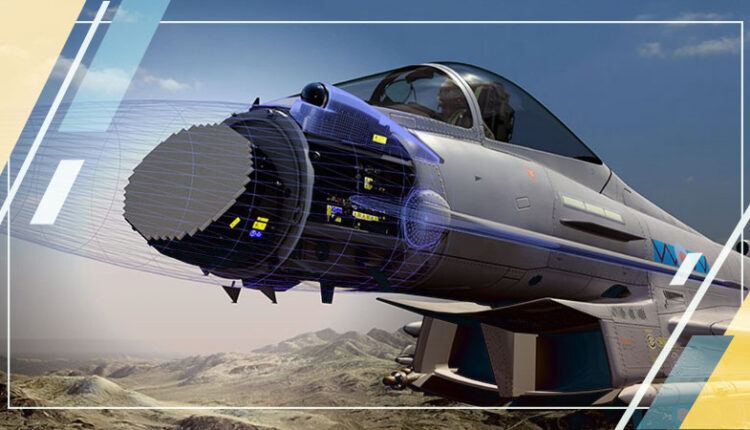In a new era of advanced radar technology, AESA radar is the epitome of precision, power, and versatility. With its state-of-the-art transmit/receive modules and agile beam steering, AESA radar is a game-changer in the world of detection and tracking. From safeguarding our skies to empowering military aircraft, this cutting-edge radar system is the beating heart of situational awareness, ensuring we stay one step ahead in an ever-evolving world.
Get ready to witness the potential of radar technology unfold before your eyes with AESA radar.
What Exactly is AESA Radar?
Active electronically scanned array radar, or AESA radar, is a phased array system with antennas that form a beam of radio waves that can be aimed in different directions without physically moving the antenna. AESA technology is primarily used in radar systems, as it allows for faster scanning in any direction compared to mechanically scanned radars.
AESA systems are primarily utilized in radars, offering unmatched capabilities in detection, targeting, tracking, and self-defense. In an AESA system, each component has its own transmit/receive module (TRM), enhancing reliability as a single component failure does not impede system functionality.
How Does AESA Radar Work?
Unlike traditional mechanically scanned radars, AESA radar does not rely on a single rotating antenna to examine the environment. It has its own small solid-state transmitter and receiver modules.
AESA radar electronically steers its radar beam by controlling the phase and amplitude of the signals emitted by each T/R module. Adjusting the timing and magnitude of these signals allows rapid beam steering and can track multiple targets simultaneously.
The two main phases of AESA radar are as follows:
● Transmit Phase
To aim the radar beam, the AESA radar system varies the phase of the transmitted signal across the array of T/R modules. It achieves constructive and destructive interference by adjusting the signal’s timing. This interference pattern determines the direction in which the radar beam is steered.
● Receive Phase
During the receive phase, the radar system uses the same T/R modules to capture the reflected signals from targets in the environment. The received signals are then processed to extract information about the range, velocity, and angle of the detected targets.
As AESA plays a crucial role in every nation’s defense, Governments provide funding and resources for research and development programs focused on AESA radar technology. One such project is the ‘Defence Resarch and Development Organization’, which conducts studies, experiments, and prototype development.
What are the Key Benefits AESA Radar Offers?
AESA radar offers several benefits over traditional mechanically scanned radars. Some of them include:
● Improved Reliability
AESA radars have no moving parts, which means they are less prone to mechanical failures and require less maintenance. This leads to increased reliability and availability of the radar system.
● Enhanced Range and Sensitivity
AESA radars can spread their signal emissions across a broader range of frequencies. This allows them to detect and track targets at longer ranges and with greater accuracy, even with higher background noise.
● Electronic Beam Steering
AESA radars can electronically steer the radar beam without physically moving the antenna. This provides faster response times and allows for agile and precise beam control, enabling the radar to track multiple targets simultaneously.
● Resistance to Electronic Jamming
AESA radars have a high degree of resistance to electronic jamming techniques. They can employ frequency-hopping techniques, where the radar rapidly changes frequencies, making it difficult for jammers to interfere with the radar’s operation.
● Improved Target Discrimination
AESA radars offer advanced target discrimination capabilities. They can generate high-resolution images, enabling the radar operator to distinguish between multiple targets in a cluttered environment and accurately identify and track specific targets of interest.
● Flexibility and multifunctionality
AESA radars can perform multiple functions simultaneously, such as surveillance, tracking, and fire control. They can also support diverse beams, allowing for enhanced situational awareness and the ability to engage multiple targets simultaneously.
With these magnifying benefits, various organizations and companies are contributing to AESA radar technology. To cite an instance, the AESA RBE2 is a high-performance radar designed for the Rafale fighter, combining advanced fire control detection and target tracking capabilities. It is designed in collaboration with Dassault Aviation and DGA to meet the Air Force’s expectations. The active antenna, consisting of hundreds of transmit and receive modules, allows the radar to steer at the speed of an electronic chip, enabling simultaneous target tracking.
Precision Redefined
In a fast-paced world where time is of the essence, AESA radar becomes the ultimate protector of our skies. With its exceptional accuracy, ability to emit multiple beams simultaneously, and resistance to jamming, it completely transforms the methods we use to identify and monitor targets. Whether in military operations or air traffic control, AESA radar provides us with an unmatched understanding of our surroundings. As we strive to push technological limits, AESA radar remains steadfast, ensuring our safety and well-being in an ever-evolving world.


